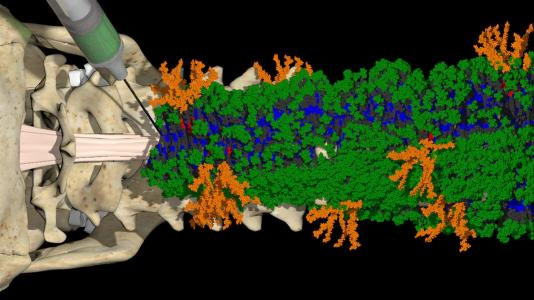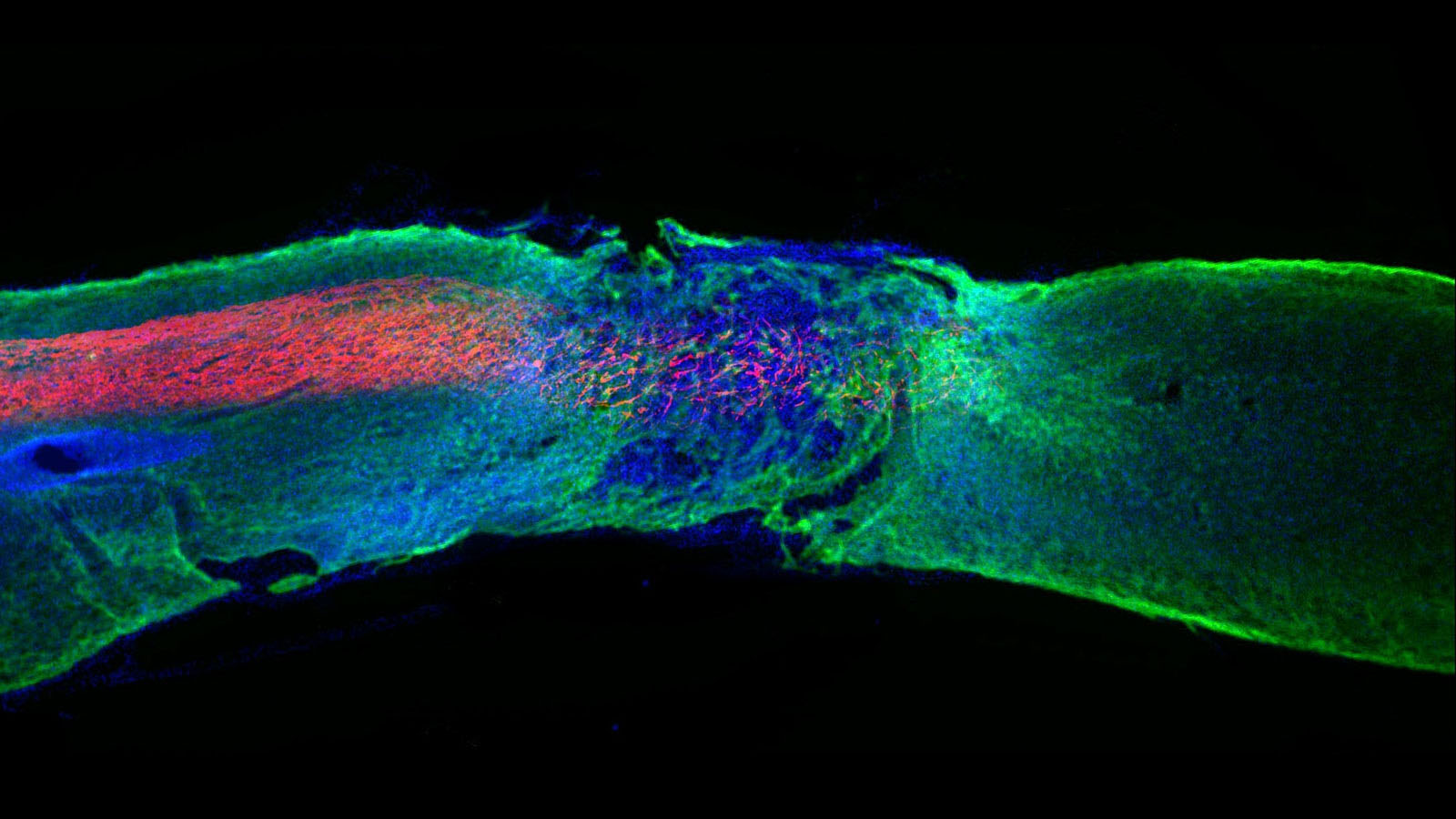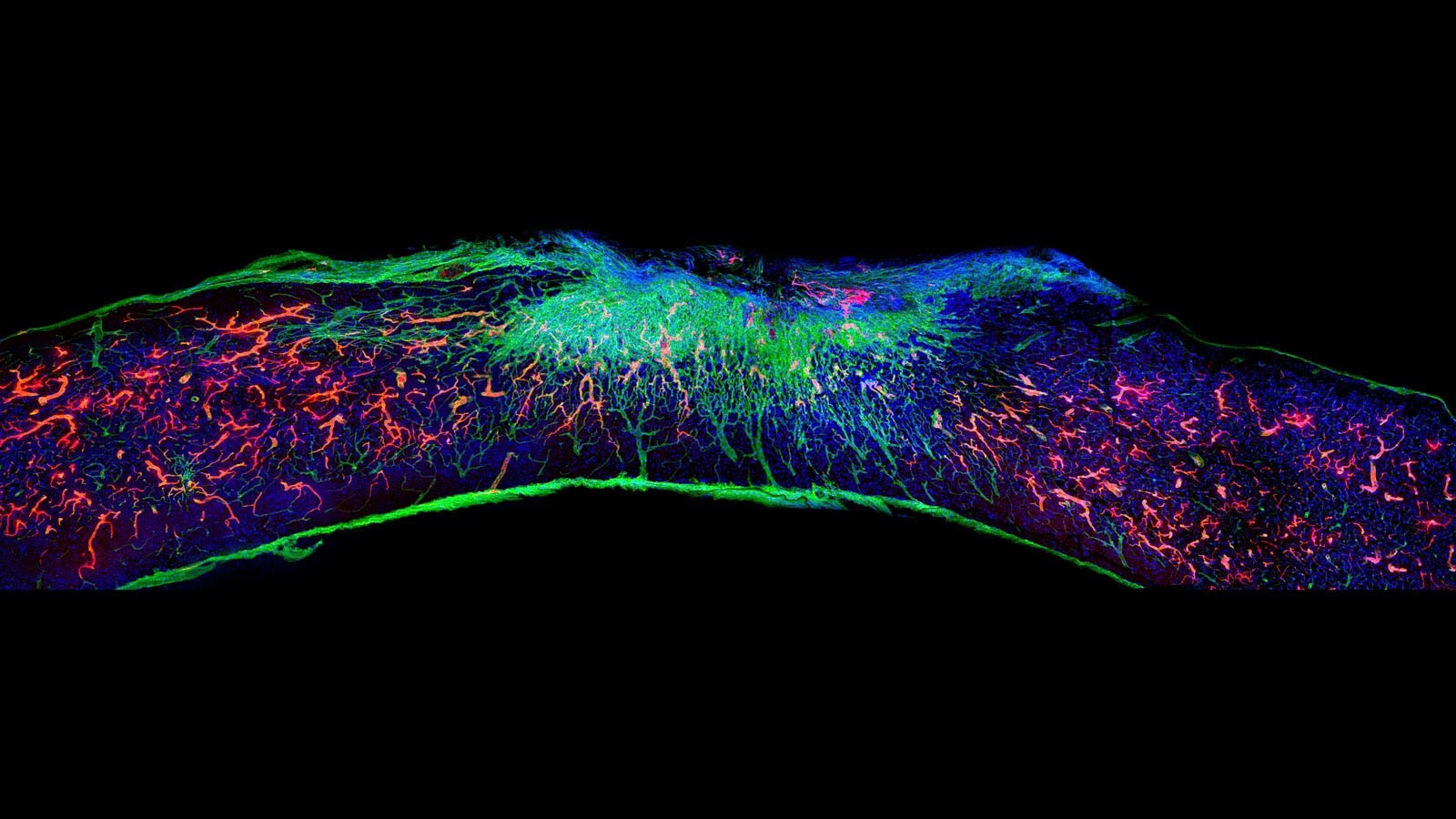| Mar 25, 2022 |
Fixing spinal cord injuries with 'dancing molecules'
|
|
(Nanowerk News) For decades, scientists have looked for an effective treatment for spinal cord injuries, often with little success. Now, new research by Northwestern University scientists has resulted in a game-changing innovation: an injection that uses “dancing molecules” to repair spinal tissue and reverse paralysis.
|
|
The treatment has already been shown to work in mice. Paralyzed mice regained their ability to walk four weeks after an injection of the new treatment. The research, recently published in Science ("Bioactive scaffolds with enhanced supramolecular motion promote recovery from spinal cord injury"), offers hope to thousands of people who are paralyzed with severe spinal cord injuries every year.
|
 |
| Researchers at Northwestern University have developed a new injectable therapy that repairs spinal cord injuries with the help of ‘dancing molecules.’ The molecules form nanofibers that move around, making it more likely they will communicate with cells to initiate repair of the injured spinal cord. (Image: Mark Seniw/Northwestern University)
|
|
“Our research aims to find a therapy that can prevent individuals from becoming paralyzed after major trauma or disease,” said Samuel Stupp, a professor of materials science and engineering, chemistry, medicine and biomedical engineering at Northwestern who led the study. “This has remained a major challenge for scientists because our body’s central nervous system, which includes the brain and spinal cord, does not have any significant capacity to repair itself after injury or after the onset of a degenerative disease.”
|
|
A critical portion of this research was conducted at the Advanced Photon Source (APS), a U.S. Department of Energy (DOE) Office of Science user facility at DOE’s Argonne National Laboratory. There, scientists used ultrabright X-ray beams to study the structure of the engineered molecules and how they behaved together in a solution.
|
 |
| Axons (red) regenerated within a damaged area of the spinal cord after being treated with a new therapy developed by Northwestern researchers with the help of the APS at Argonne. (Image: Samuel I. Stupp Laboratory/Northwestern University)
|
|
Injected as a liquid, the molecules came together in a solution to form tiny fiber structures (called nanofibers) that surrounded the spinal cord. The researchers discovered that the motion of molecules within the nanofibers could be controlled by changing their chemical structure. It turned out that molecules that moved most — “danced” more — were more likely to signal cells via proteins called receptors, resulting in a more effective treatment.
|
|
“Receptors in neurons and other cells constantly move around,” Stupp said. “The key innovation in our research, which has never been done before, is to control the collective motion of more than 100,000 molecules within our nanofibers. By making the molecules move by design, translate, or even leap temporarily out of these structures, they are able to connect more effectively with receptors.”
|
|
Knowing the structure of the molecular matrix allowed Stupp to tune the motion of the molecules. By making the molecules “dance,” they were more likely to find and engage cellular receptors, triggering the cells to repair damaged neurons.
|
|
Work to determine the organizational structure of the dancing molecules in their molecular assembly was done at the Dow Northwestern DuPont Collaborative Access Team (DND-CAT) beamline at the APS, run by Northwestern’s Synchrotron Research Center.
|
|
“The APS is an important tool for this type of research,” said Northwestern’s Steven Weigand, a beamline scientist at DND-CAT and an author on the paper. At this experiment station, Northwestern researchers like Stupp can look at the structure of a variety of chemistries and make this a regular part of their experimental method. This station also allows scientists to look at molecules over a broad range of scales simultaneously, from hundreds of nanometers down to fewer than 10. (For scale, a sheet of paper is about 100,000 nanometers thick.)
|
 |
| Blood vessels (red) regrow inside a damaged spinal cord after treatment with 'dancing molecules'. (Image: Samuel I. Stupp Laboratory/Northwestern University)
|
|
“Without having ready access to the APS, you would have to be more restrictive on what samples you could run, and you may miss what’s important,” Weigand said.
|
|
X-ray experiments were a critical step in this discovery, Stupp said, adding that he could not have conducted key parts of this research without access to a light source facility such as the APS.
|
|
“This research will have broad impacts for biomedical therapies, not just for spinal cord injuries, but for other neurogenerative diseases that impact the nervous system, such as Alzheimer’s or strokes,” he said.
|
|
Stupp is already in the process of applying for FDA approval to test the therapy in human subjects who have few other treatment options. He also has high hopes for using “dancing molecules” to develop effective therapies for other diseases in the future.
|



